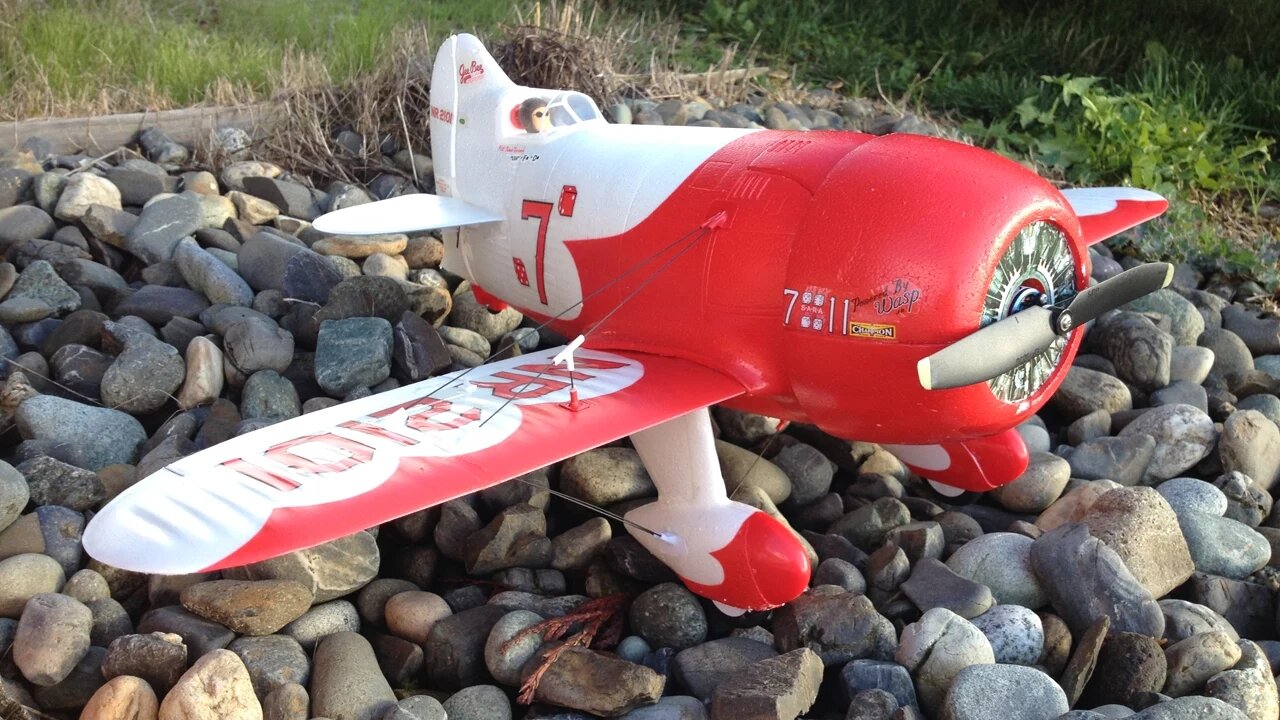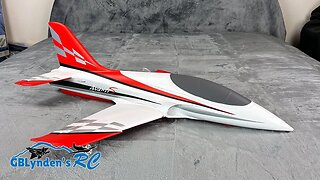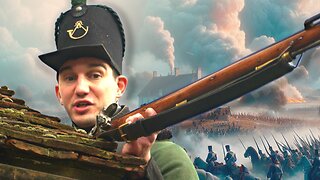Premium Only Content

E-flite UMX Gee Bee R2 BNF RC Plane with AS3X Technology
This video features John doing stunts and tricks with his E-flite UMX Gee Bee R2 BNF RC Plane with AS3X Technology. He is flying his Ultra Micro Gee Bee and doing it with his usual high level of skill and unpredictability.
Link to E-flite Gee Bee RC Plane: https://amzn.to/2pxaFsD
The links in this description are affiliate links. They give me a small commission on sales which helps support the channel and keep it independent: https://www.amazon.com/shop/gblyndensrc
When this plane first came out, a lot of folks thought is was from Parkzone and many still call it a Parkzone Ultra Micro or Parkzone UMX, when in fact is it an E-flite Gee Bee UMX RC Plane.
This one came out around the same time the UMX Beast 3D came out with AS3X and long before the E-flite Pitts S-1S or UMX Pitts S-1S Ultra Micro Biplane. The same goes for the UMX Radian.
As indicated at the end of the video, here is a link to John's YouTube Channel: https://www.youtube.com/user/JohnVH541
Another note, this is modeled after a real plane. For the history on this plane, please see below:
The Gee Bee Model R Super Sportster was a special purpose racing aircraft made by Granville Brothers Aircraft of Springfield, Massachusetts. Gee Bee stands for Granville Brothers.
The 1932 R-1 and its sister plane, the R-2, were the successors of the previous year's Thompson Trophy-winning Model Z. Assistant Chief Engineer[1] Howell "Pete" Miller and Zantford "Granny" Granville spent three days of wind tunnel testing at NYU with aeronautical engineering professor Alexander Klemin. The aircraft had a very peculiar design. Granville reasoned that a teardrop-shaped fuselage — especially as seen from directly above — would have lower drag than a straight-tapered one, so the fuselage was wider than the engine at its widest point (at the wing attachment point). The cockpit was located very far aft, just in front of the vertical stabilizer, in order to give the racing pilot better vision while making crowded pylon turns. In addition, it turned out that the fuselage acted as an airfoil, like the 'lifting-body' designs of the 1960s. This allowed the aircraft to make tight "knife-edge" turns without losing altitude. It was, in effect, a Pratt & Whitney R-1340 engine with wings and a tail on it.
The R-1 won the 1932 Thompson Trophy race, piloted by Jimmy Doolittle. He also set a new world landplane speed record of 476 km/h (296 mph) in the Shell Speed Dash. The distinction of a landplane record was noteworthy because, at that time, specialized speed seaplanes outran landplanes (see Schneider Trophy). The Springfield Union of September 6, 1932 quoted Doolittle as saying, "She is the sweetest ship I've ever flown. She is perfect in every respect and the motor is just as good as it was a week ago. It never missed a beat and has lots of stuff in it yet. I think this proves that the Granville brothers up in Springfield build the very best speed ships in America today."
The R-1 rapidly earned a reputation as a potentially very dangerous machine. The small wings, very low polar moment of inertia, and tiny control surfaces made for an aircraft that could rapidly get away from all but the most skilled pilots.[2] This shortcoming was common to most air racers of the day. During the 1933 Bendix Trophy race, racing pilot Russell Boardman was killed, flying Number 11. After taking off from a refueling stop in Indianapolis, Indiana, the R-1 stalled, and crashed.[3]
The R-1 was later repaired and now incorporated a fuselage extension of approximately 18 inches, creating the "Long Tail Racer." It was decided not to rebuild the wings but to use the original wings from the R-2, which had been removed in February 1933 when a new wing with flaps was built and installed. This aircraft crashed in a landing overrun incident soon after it was built but Roy Minor, the pilot, was not severely injured. After another rebuild, the Long Tail Racer was sold to Cecil Allen. Allen, against the advice of the Granvilles, modified it by installing larger gas tanks aft of its normal center of gravity, which apparently made the aircraft unstable in pitch from tail-heaviness. Allen took off with a full fuel tank, crashed, and was killed. After this final crash, the aircraft was never rebuilt.[4]
-
 7:43
7:43
GBLynden's RC
1 year agoNew Jet Unboxing | Arrows RC Avanti S 50mm EDF Jet
243 -
 2:08:53
2:08:53
vivafrei
14 hours agoEp. 252: Liberals DISQUALIFY Candidate from Race! DOGE Wins & Loses; Rumble Sues BRAZIL! & MORE!
108K197 -
 1:15:12
1:15:12
Josh Pate's College Football Show
4 hours ago $0.29 earnedCFB’s Top 12 Programs | TV Executives & Our Sport | USC Changes Coming | Early Championship Picks
34.6K2 -
 LIVE
LIVE
Vigilant News Network
9 hours agoUK Government BUSTED in Secret Plot to Extract Your Data | Media Blackout
1,349 watching -
 1:03:32
1:03:32
Winston Marshall
3 days ago"War On Children!" The DEMISE Of The West Starts With Schools - Katharine Birbalsingh
91.4K62 -
 48:02
48:02
Survive History
12 hours ago $2.34 earnedCould You Survive as a Sharpshooter in the Napoleonic Wars?
43.7K3 -
 12:03
12:03
Space Ice
12 hours agoSteven Seagal's China Salesman - Mike Tyson Knocks Him Out - Worst Movie Ever
26.9K14 -
 11:37
11:37
Degenerate Jay
12 hours ago $2.41 earnedJames Bond Needs Quality Over Quantity From Amazon
51.4K3 -
 15:23
15:23
Misha Petrov
12 hours agoTrad Wives & Girl Bosses Go to WAR!
46.1K42 -
 2:03:11
2:03:11
TheDozenPodcast
10 hours agoFootball villain fighting the state: Joey Barton
39K1